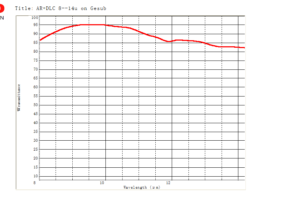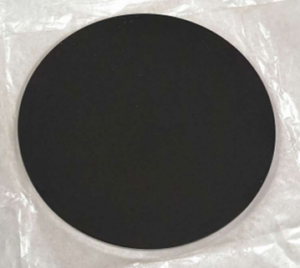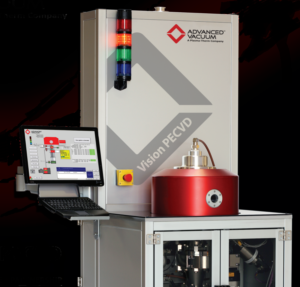What is DLC coating in optics ?
When dealing with infrared optics, especially in defense industry one cannot avoid hearing about DLC coatings. But what are they ? Why are they used ?
How are DLC coating applied on optics ?
DLC stands for Diamond Like Carbon, it is a black/ dark grey thin layer of amorphous carbon that can be coated on different surfaces. DLC coatings can be used in different industries, but we will focus on DLC coatings for optical components.
Most of the DLC application are made with either PEPVD (Plasma Enhanced Physical Vacuum Deposition) or PECVD (Plasma Enhanced Chemical Vacuum Deposition). These process consist of a plasma being created in a vacuum chamber where the substrat has been positioned on a substrate holder that serve as an electrode, the contact between the plasma and the substrate leads to the creation of a coating layer.
The use of vacuum chamber creates a clean environment and then reduce the risk of impurities in the coating layer. The plasma is created by ionizing a gas pumped in the chamber. For DLC coating the gas is either methane (CH4) or acetylene (C2H2) both very rich in carbon atoms. Du to the process, complex shapes can be coated with very good homogeneity, DLC coating is not limited to flat surfaces.
Plasma Enhanced technology is used instead of normal CVD/PVD method as it’s working temperature is much lower (around 250° vs 600-900°C) which protects temperature sensitive substrates like Germanium. The growth rate of the coating layer is constant, it is then easy to monitor layer thickness by controlling the time of reaction. Typical thickness of DLC coating is 1.2µm, but may vary according to the substrate material.
Diamond Like Carbon coating can be applied directly on Germanium and Silicon substrats and can also be use with additional intermediary layer with chalcogenide glass, ZnSe and ZnS substrates.
DLC coating is relatively expensive it’s application is therefore limited to the front face of the optic, the one that will be in contact with the external environment.
Diamond Like Carbon coatings usages
DLC coatings shows very interesting advantages :
- Good transparency in the IR (8-12µm) with a transmission better than 88%
- Act as a Anti-Reflective coating
- Very hard protection layer, anti-scratch
- Stable coating can match MIL-C-48497 requirements (tape adherence test, eraser test, salt spray / salt water tests, temperature / humidity tests etc..)
- High corrosion resitance
- Low friction
- Biocompatible
- High refractive index (around 2, depends on the measuring wavelength and application method)

Germanium window with AR & DLC coating transmission curve
It is interesting to note that germanium has an average transmission in the 8-12µm range of less than 50%, the addition of AR or DLC coatings increase this value to more that 90%.
While DLC can be used as a Anti-reflective coating, BBAR coatings still have better performances on IR optics than sole DLC layer. It is therefore recommended for better performance to have a DLC layer on one side and AR coating on the other side.








